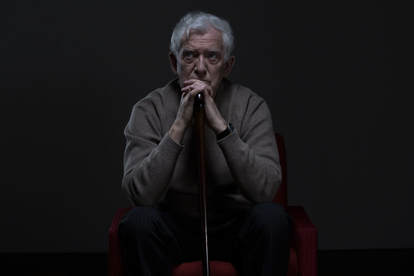Frailty not ‘inevitable result of ageing’, can be reversed

Nearly 40 per cent of senior Australians are at risk of frailty, but there are ways to halt or reverse the onset, new research reveals.
The government-funded study, Frailty in Community Dwelling Older People – Using Frailty Screening as the Canary in the Coal Mine revealed that while 38 per cent of people older than 65 are “pre-frail”, identification of risk factors, diet modifications, increased activity and re-evaluation of medication have the potential to turn back the clock.
The research, performed by not-for-profit aged care provider Benetas, also found that 6 per cent of older Australians can be described as frail. The researchers defined frailty as reduced resilience to external stressors.
“For older people, frailty is the ‘canary in the coalmine’ that can detect an adverse decline before it happens,” Benetas’ Stephen Burgess and Dr Cheryl Hercus explained.
To Aged Care Minister Ken Wyatt, the ability to detect frailty is a “game changer” in helping older Aussies have a “healthier and more active future”.
The research, obtained by a screening questionnaire which measured Fatigue, Resistance, Ambulation Illnesses and Loss of weight (FRAIL), also found that women were more likely to be frail than men, with 8 per cent and 5 per cent corresponding prevalence.
Further, 41 per cent of women were found to be pre-frail, compared to 34 per cent of men.
Nevertheless, the fact that not all seniors were frail or pre-frail suggests that frailty is “not an inevitable result of ageing and may be prevented or treated”, Mr Wyatt said.
“Importantly, the study recommends that with the right support at the right time, frailty can be halted or even reversed by consulting with health professionals for safe, simple, inexpensive, practical interventions,” he continued.
The study suggested boosting protein intake and taking vitamin D supplements as dietary changes with the potential to turn back the clock.
Increasing physical activity through light resistance exercises and walking and considering prescription medication intake with a GP were also listed as effective interventions.
Mr Wyatt also urged older Australians to take the FRAIL test, arguing that early intervention “can also contribute to a more sustainable and efficient aged care system”.
The test can be accessed via the Positive Ageing Resource Centre website and includes a printable personal summary which can be presented to healthcare professionals, Mr Wyatt’s office said.
“We know Australians overwhelmingly want to remain in their own homes for as long as possible and that staying strong and healthy is the best way to achieve this,” the minister concluded.
https://www.nestegg.com.au/retirement/11382-frailty-not-inevitable-result-of-ageing-can-be-reversed
The government-funded study, Frailty in Community Dwelling Older People – Using Frailty Screening as the Canary in the Coal Mine revealed that while 38 per cent of people older than 65 are “pre-frail”, identification of risk factors, diet modifications, increased activity and re-evaluation of medication have the potential to turn back the clock.
The research, performed by not-for-profit aged care provider Benetas, also found that 6 per cent of older Australians can be described as frail. The researchers defined frailty as reduced resilience to external stressors.
“For older people, frailty is the ‘canary in the coalmine’ that can detect an adverse decline before it happens,” Benetas’ Stephen Burgess and Dr Cheryl Hercus explained.
To Aged Care Minister Ken Wyatt, the ability to detect frailty is a “game changer” in helping older Aussies have a “healthier and more active future”.
The research, obtained by a screening questionnaire which measured Fatigue, Resistance, Ambulation Illnesses and Loss of weight (FRAIL), also found that women were more likely to be frail than men, with 8 per cent and 5 per cent corresponding prevalence.
Further, 41 per cent of women were found to be pre-frail, compared to 34 per cent of men.
Nevertheless, the fact that not all seniors were frail or pre-frail suggests that frailty is “not an inevitable result of ageing and may be prevented or treated”, Mr Wyatt said.
“Importantly, the study recommends that with the right support at the right time, frailty can be halted or even reversed by consulting with health professionals for safe, simple, inexpensive, practical interventions,” he continued.
The study suggested boosting protein intake and taking vitamin D supplements as dietary changes with the potential to turn back the clock.
Increasing physical activity through light resistance exercises and walking and considering prescription medication intake with a GP were also listed as effective interventions.
Mr Wyatt also urged older Australians to take the FRAIL test, arguing that early intervention “can also contribute to a more sustainable and efficient aged care system”.
The test can be accessed via the Positive Ageing Resource Centre website and includes a printable personal summary which can be presented to healthcare professionals, Mr Wyatt’s office said.
“We know Australians overwhelmingly want to remain in their own homes for as long as possible and that staying strong and healthy is the best way to achieve this,” the minister concluded.
https://www.nestegg.com.au/retirement/11382-frailty-not-inevitable-result-of-ageing-can-be-reversed
